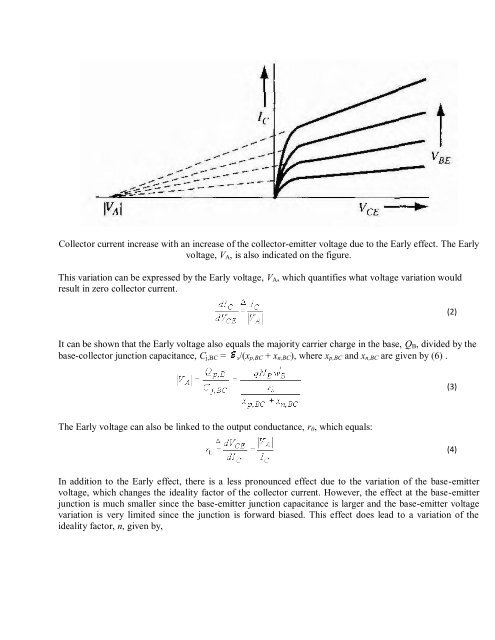EC6201_uw
You also want an ePaper? Increase the reach of your titles
YUMPU automatically turns print PDFs into web optimized ePapers that Google loves.
Collector current increase with an increase of the collector-emitter voltage due to the Early effect. The Early<br />
voltage, V A , is also indicated on the figure.<br />
This variation can be expressed by the Early voltage, V A , which quantifies what voltage variation would<br />
result in zero collector current.<br />
(2)<br />
It can be shown that the Early voltage also equals the majority carrier charge in the base, Q B , divided by the<br />
base-collector junction capacitance, C j,BC = s/(x p,BC + x n,BC ), where x p,BC and x n,BC are given by (6) .<br />
(3)<br />
The Early voltage can also be linked to the output conductance, r 0 , which equals:<br />
(4)<br />
In addition to the Early effect, there is a less pronounced effect due to the variation of the base-emitter<br />
voltage, which changes the ideality factor of the collector current. However, the effect at the base-emitter<br />
junction is much smaller since the base-emitter junction capacitance is larger and the base-emitter voltage<br />
variation is very limited since the junction is forward biased. This effect does lead to a variation of the<br />
ideality factor, n, given by,


